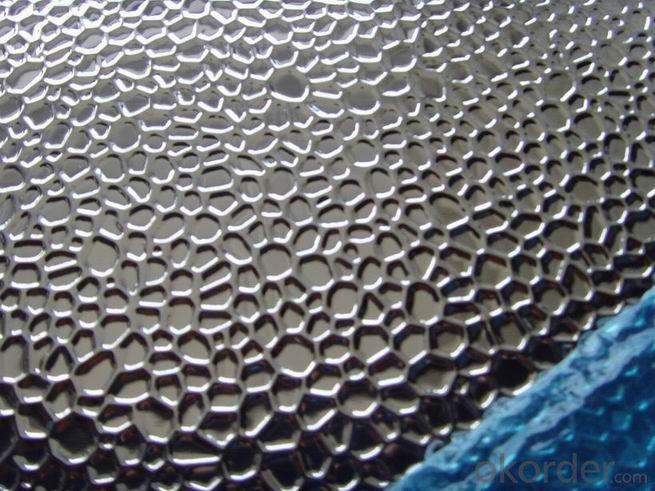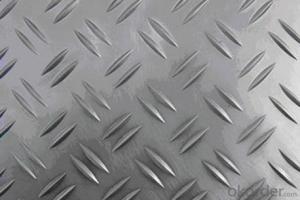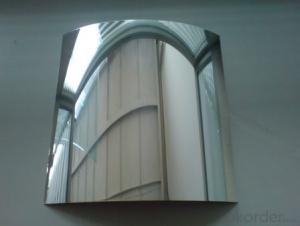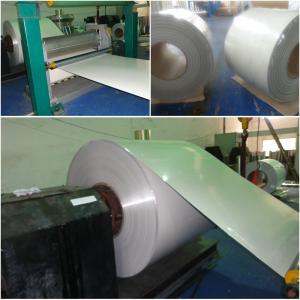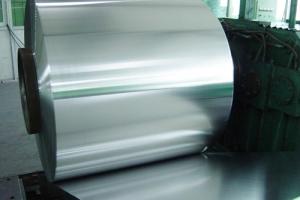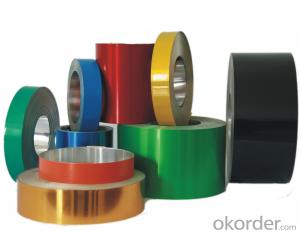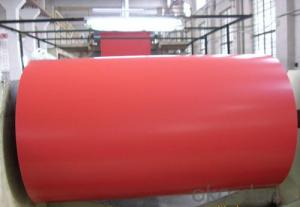Aluminum Sheets for Attics - Cold Rolled/Hot Rolled Aluminium Coil with Embossed/Mirror/Color Coated Treatment
- Loading Port:
- Shanghai
- Payment Terms:
- TT OR LC
- Min Order Qty:
- 5 m.t.
- Supply Capability:
- 9000 m.t./month
OKorder Service Pledge
OKorder Financial Service
You Might Also Like
Specification
Product Description
Product | aluminium coil |
Thickness | 0.25mm-2.0mm |
Width | 800mm-1900mm |
inner diameter | 505mm (as per requirements) |
weight | 2000kg-3000kg |
Material | 1050,1060,1100,3003,3004,3105,5052,5005, 5754,5083,6061,6063 etc |
Temper | O,H12,H14,H16,H18,H24,H26, H32,H34,H111,H112,T3,T5,T6 etc |
Surface | flat |
Packing | Export standard wooden pallets (as per requirements) |
Minimum Order Quanlity | 5 tons pre size |
Delivery time | 20-30 days after receiving L/C or deposit |
Loading Port | Qingdao,Shanghai China |
Remark | Specific requirement of alloy grade,temper or specification can be discussed at your request |
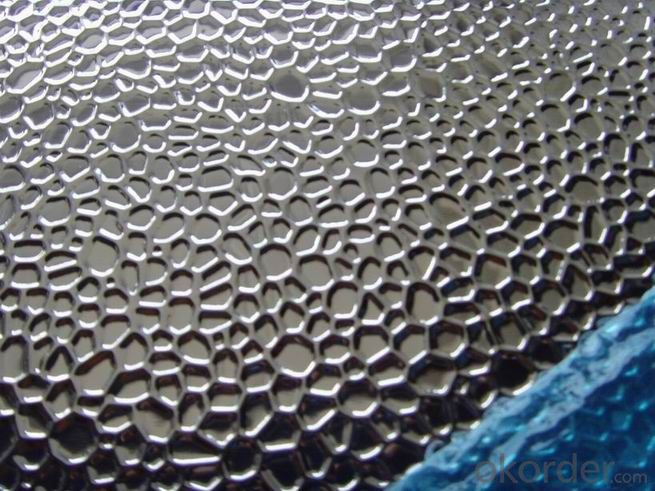
Packaging & Shipping
1.with wooden pallet packing.
2.standard fumigated wooden package.
3.other packing methods by customer's requirement.
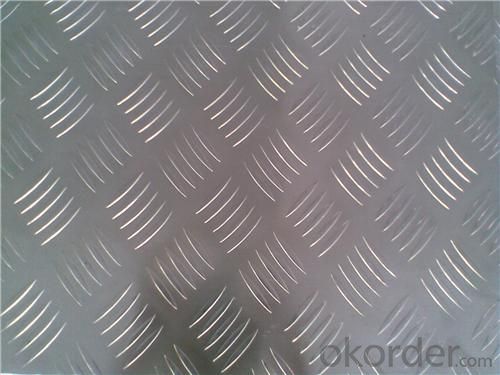
Company Information
Our company is a leading company in the field of producing aluminum sheet,aluminum plate,aluminum coils,aluminum tap,aluminum foil and other products.we have the hot rolling production line,casting&rolling production line,cold rolling production line,shearing machine,annealing furnace and other equipment
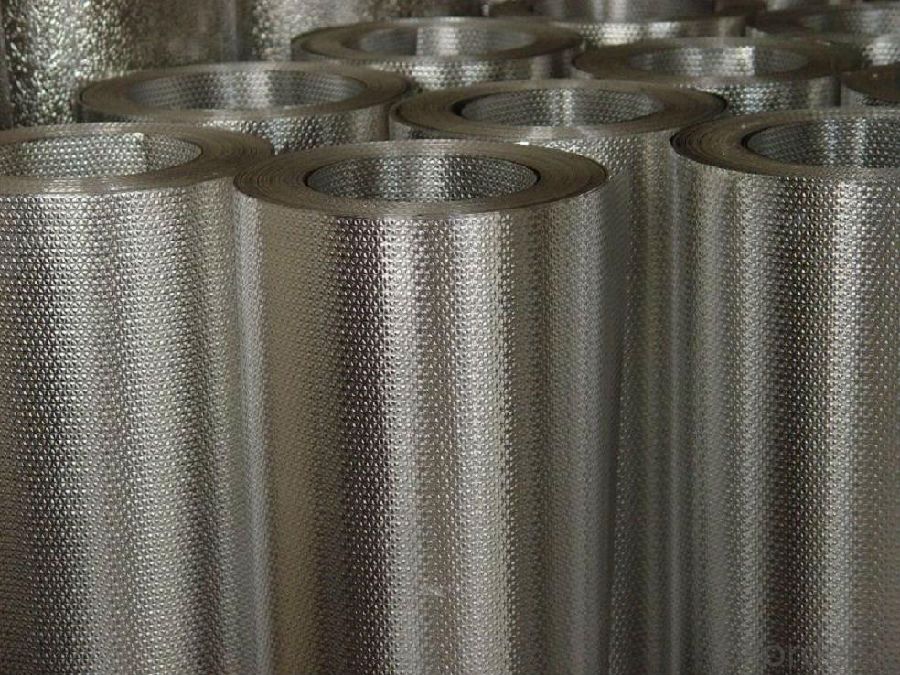
- Q: Normally, when I install a 30-amp dryer receptacle, the wire is #10 copper and I double over the end with lineman's pliers prior to landing it in the lug just to be extra tight. Today I replaced a dryer outlet wired with #8 aluminum SE. The quandaray I have is that the lugs seem made for #6 and the #8 just sort of flattens and divides under the screw. Is this safe? The doubling over move makes the wire way too thick for the lugs to close. I've been doing electric for many years and have never run into this. Should I go back and re-run the circuit (only about 30 feet) in #10 copper? What is the actual draw of a typical electric dryer on high heat, anyway? Thanks.
- Copper safer than Alum at high amperages
- Q: This question asks about the various types of aluminum sheets that are commonly used for roofing purposes, including their specific applications and characteristics.
- <p>Aluminum sheets used for roofing come in various types, each with unique properties and applications. The main types include: 1) Corrugated Aluminum Sheets: Known for their strength and durability, these are often used in commercial and industrial roofing due to their ability to withstand harsh weather conditions. 2) Standing Seam Aluminum Sheets: These provide a sleek, clean look and are favored for their water-resistant properties, making them ideal for residential and architectural applications. 3) Flat Aluminum Sheets: Offer a smooth surface finish and are used where a uniform appearance is desired. 4) Perforated Aluminum Sheets: These have small holes that allow for ventilation, reducing heat build-up and are used in areas requiring natural light and air circulation. 5) Embossed Aluminum Sheets: With a textured surface, they provide added rigidity and are used in both residential and commercial settings for their aesthetic appeal. Each type is chosen based on the specific needs of the roofing project, such as design, weather resistance, and longevity.</p>
- Q: What is the weight of a standard aluminum sheet?
- Depending on its dimensions and thickness, the weight of a standard aluminum sheet may vary. On average, aluminum sheets tend to weigh approximately 2.7 grams per cubic centimeter. If you wish to ascertain the weight of a particular aluminum sheet, you must possess knowledge of its dimensions (length, width, and thickness). By multiplying these dimensions, you can determine the sheet's volume. Subsequently, you can calculate the weight in grams by multiplying the volume by the density of aluminum (2.7 g/cm³).
- Q: Can aluminum sheets be an alternative to wood in certain applications?
- Certainly, aluminum sheets can serve as a viable substitute for wood in specific applications. Aluminum boasts numerous advantages over wood, rendering it a favored choice across various industries. Primarily, aluminum exhibits exceptional durability and longevity due to its resistance to corrosion, rot, and pests. Consequently, it proves ideal for outdoor usage or areas with high moisture levels. Moreover, aluminum sheets are lightweight, facilitating easier handling and transportation in comparison to wood. Additionally, they possess a commendable strength-to-weight ratio, enabling them to withstand heavy loads while maintaining their structural integrity. Moreover, aluminum stands as a sustainable material, capable of indefinite recycling without compromising its properties. Conversely, wood necessitates the felling of trees, thereby carrying environmental implications. Aluminum sheets also offer a high degree of design flexibility, readily assuming complex structures through shaping, bending, and forming. This adaptability allows for innovative and creative applications. Furthermore, aluminum exhibits excellent thermal and electrical conductivity, rendering it suitable for scenarios where heat dissipation or electrical conductivity plays a crucial role. Nonetheless, it is crucial to acknowledge that wood retains its unique characteristics and benefits in certain applications. Wood imparts a warm and natural aesthetic that aluminum fails to replicate, making it a preferred choice in interior design or furniture manufacturing. Additionally, wood qualifies as a renewable resource and exhibits excellent insulation properties, proving advantageous in construction or insulation applications. Consequently, while aluminum sheets can serve as a fantastic substitute for wood in numerous instances, the ultimate choice hinges upon the specific requirements and desired outcomes of the application at hand.
- Q: Can aluminum sheets be powder-coated?
- Indeed, aluminum sheets undergo powder coating, a procedure involving the electrostatic application of dry, powdered paint onto a surface. Subsequently, the coated aluminum is subjected to heat curing, resulting in a robust and visually appealing finish. Aluminum is particularly well-suited for powder coating due to its lightweight nature and resistance to corrosion. The powder coating firmly attaches to the aluminum surface, creating a protective layer that enhances the sheet's aesthetic appeal while offering enduring safeguard against deterioration.
- Q: If Aluminum can, in fact, not be sterilized I would love to know why.
- Aluminum can be sterilized. A variety of methods exist for sterilizing any material, including (but certainly not limited to) food, medical devices such as needles/syringes, and surgical metals. Here are two ways you can sterilize aluminum: Autoclave it. Autoclaving is a process where you heat an item up to approximately 300 degrees F, under high pressure. The combination of the pressure and the heat kills anything that's alive, rendering it sterile. Almost every lab in the country has at least one autoclave machine and most labware manufacturers today build their products keeping in mind that the product will be autoclaved (perhaps many dozens of times) in the future. Gamma radiation. Gamma radiation sources, such as Cobalt-60, are used to sterilize almost every item you can think of that is individually packaged in a hospital or laboratory, including test tubes, general labware, and any other liquid-handling instruments. Some foods are also sterilized this way to increase shelf life (don't worry, the food never holds any of the radiation). Aluminum can not only be sterilized, but it can be sterilized using techniques and protocols very common today. Hope this helps.
- Q: What are the standard sizes and availability of aluminum sheets in the market?
- The standard sizes and availability of aluminum sheets in the market can vary depending on the location and specific requirements. However, there are some commonly available sizes that can generally be found in most markets. In terms of thickness, aluminum sheets are commonly available in 0.02 to 0.2 inches (0.5 to 5 millimeters) thickness range. Thinner sheets (0.02 to 0.06 inches) are often used for lightweight applications such as signage or crafts, while thicker sheets (0.1 to 0.2 inches) are typically used for more heavy-duty applications like construction or industrial purposes. Regarding width and length, standard aluminum sheet sizes are often offered in 4 feet by 8 feet (48 inches by 96 inches) or 4 feet by 12 feet (48 inches by 144 inches). These dimensions are widely available and suitable for various applications. However, it's important to note that custom sizes can also be ordered or cut from larger sheets to meet specific project requirements. Availability of aluminum sheets can be found in various locations, including local hardware stores, metal suppliers, and online marketplaces. It is always recommended to check with local suppliers or conduct online research to determine the specific sizes and availability in your area. Additionally, different grades or alloys of aluminum may have varying availability, so it's essential to consider the specific requirements of your project when sourcing aluminum sheets.
- Q: What are the different alloys used in aluminum sheets?
- There are several different alloys used in aluminum sheets, each with its own unique properties and characteristics. Some of the commonly used alloys are: 1. 1100: This alloy is known for its excellent corrosion resistance and high electrical conductivity. It is often used in applications requiring a high level of formability and weldability, such as food packaging and electrical conductors. 2. 3003: This alloy is widely used in various applications due to its good formability, moderate strength, and excellent corrosion resistance. It is commonly used in cooking utensils, chemical equipment, and general sheet metal work. 3. 5052: This alloy is known for its high strength and good corrosion resistance. It is often used in marine applications, as well as in aircraft fuel tanks and automotive parts. 4. 6061: This alloy is one of the most versatile and widely used aluminum alloys. It offers excellent corrosion resistance, good weldability, and moderate strength. It is commonly used in structural components, such as frames and railings, as well as in automotive parts and aerospace applications. 5. 7075: This alloy is known for its high strength-to-weight ratio and excellent fatigue resistance. It is often used in applications requiring extreme strength, such as aircraft and aerospace components, as well as in high-performance sporting goods. These are just a few examples of the many different alloys used in aluminum sheets. The choice of alloy depends on the specific application requirements, such as strength, corrosion resistance, formability, and weldability.
- Q: I saw some pretty horrific pictures today of bow shooters with their hands impale by pieces of a carbon arrow that broke after being shot. I'm about to get into the archery sport, and I just want to know before I buy my arrows, will it be safer to buy aluminum shaft arrows instead of carbon? People said aluminum ones aren't as strong, but right now I'm more concern with the safety factor. Yes, I do know that I'm suppose to always check carbon arrows for cracks before I shoot them, but we're all human and sometimes people will forget and make mistakes. I just don't want my hand embedded with carbon shrapnel. So should I get carbon or aluminum? Maybe the new full metal jacket ones will be a good compromise?As a side note, my first bow will be a recurve somewhere around the 30-35 lb draw range. Does the power of the bow affect the chances of an arrow breakage?
- If this is your first bow, I'd say go aluminum. Get the Platinum Plus from Easton, much cheaper and a hell of a lot better build than carbon arrows twice its price. The key with aluminum is to choose shafts with thick walls. When you look at the shaft sizes, you have a 4 digit number. The first 2 digits represents the outer diameter of the shaft, while the second 2 digits represents the wall thickness. With Plats, you want to get something with a 16 wall thickness. That's 16/1000, so 1516 or 1716 etc. The size/stiffness of these shafts will depend on 2 major factors, and 1 not so major one. The major factors are drawlength and draw weight at that drawlength. The one other factor is the bow design and material. Certain newer top end limbs will be so fast that they need stiffer arrows compared to older bows of the same drawweight. Now, carbon shafts, carbon shafts break yes, but it's your responsibility to make sure before you shoot to check for micro cracks. To do that, you bend the arrow and turn the shaft while listening for cracking noises. Well built carbon shafts will last a very long time, but well built carbon arrows are also at least 3 times more expensive than the Plats. Some durable arrows include the Gold Tip, and the Carbon Express. Not all carbon arrows are built to be durable mind you. Some are built for speed sacrificing durability. So, my vote is get yourself a set of Platinums, these shafts, while cheap had been the world record holder for a rather long time at 18m and 25m.
- Q: 1) Aluminum ore is not formed in Quebec (why not?) 2)but aluminum ore is smelted into aluminum in Quebec. Why?
- Bauxite is the most common aluminum ore. Bauxite forms in tropical regions because its formation requires intense weathering conditions (lots of frequent rainfall) with a very good drainage. Even if, due to continental drift, Quebec was once in a tropical region, it is highly unlikely that bauxite would have formed there because almost all of Quebec sits on the Canadian Shield. The Canadian Shield is a large region of very, very old rock that can be thought of as mostly monolithic and quite flat. Its monolithic nature makes it difficult to weather, and its flatness means that it doesn't drain as well as is needed to form bauxite. Smelting bauxite requires enormous amounts of electricity - not just any energy, but electricity. Quebec has enough hydroelectric resources to make this practical.
Send your message to us
Aluminum Sheets for Attics - Cold Rolled/Hot Rolled Aluminium Coil with Embossed/Mirror/Color Coated Treatment
- Loading Port:
- Shanghai
- Payment Terms:
- TT OR LC
- Min Order Qty:
- 5 m.t.
- Supply Capability:
- 9000 m.t./month
OKorder Service Pledge
OKorder Financial Service
Similar products
Hot products
Hot Searches
Related keywords





